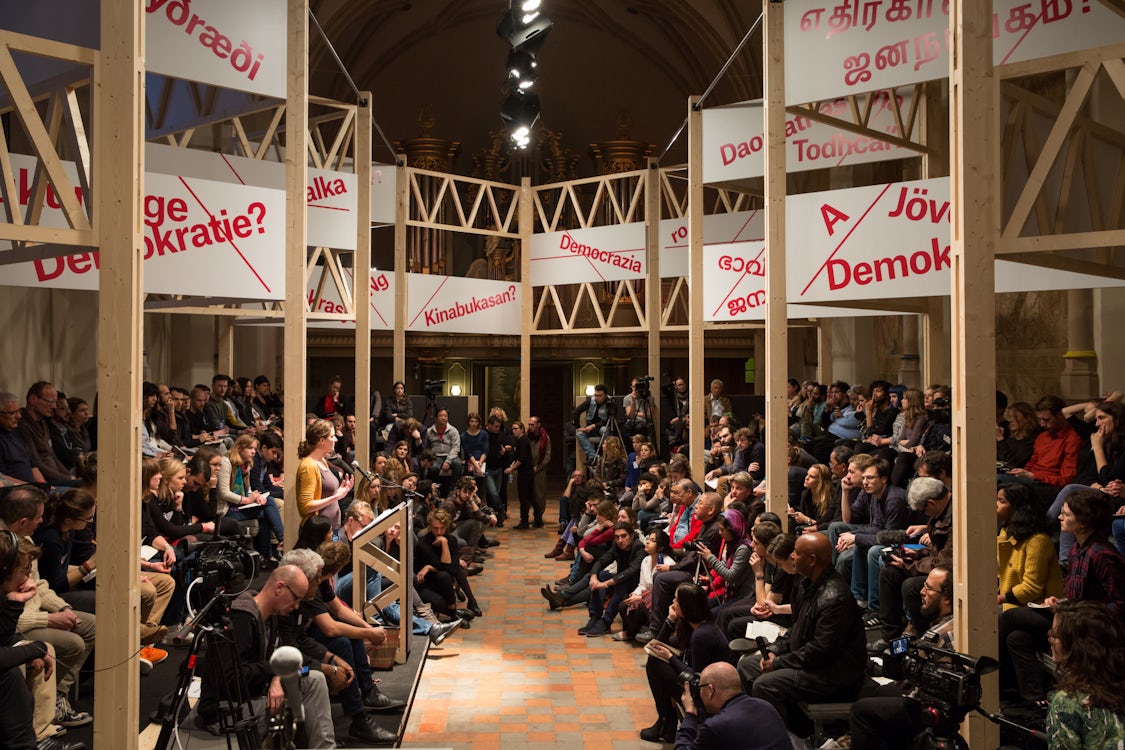Adept at the art of self-definition, Jonas Staal has articulated complementary and overlapping conceptual frameworks for his practice. The first is that of Assemblism, which is predicated on a morphology of live assemblies; on the other hand, that of Organizational Art aims to foster emancipatory organisational structures. 1 These are interrelated concepts rather than mutually exclusive categories: Artist Organisations International, for instance, was an assembly at HAU (Hebbel am Ufer) in Berlin that presented a putative ‘international’ of artist organisations – practitioners of Organizational Art. In fact, Staal’s practice is characterised by an attempt to go beyond the Occupy-style horizontal and spontaneist assembly both by designing assemblies more carefully so as to avoid endless and aimless debates, and by integrating them in long-term projects and emergent organisational structures.
“You can conquer a place without occupying it. This is what is called a market.”
Here, I will focus on the dialectical relation between specific assembly-forms – the summit, the parliament, the tribunal, the council – and organisational structures, as articulated in or suggested by Staal’s work. My analysis centres on what I see as some of the fundamental parameters and strategies of his work, which means that I largely abstain from a more detailed reading of the proceedings and dynamics of individual projects. I argue that Staal consistently engages with forms of representation, and seeks to re-form them. Insofar as, according to Jacques Rancière, modern and contemporary art constitutes an aesthetic regime that breaks with the representative regime of art, this is not because modern art has ditched figuration for abstraction, or representation for pure form. 2Rather, modern aesthetic practice de- and re-composes the forms of representation in more than one register – challenging, but not cancelling out, the divide between artistic work and political action.

